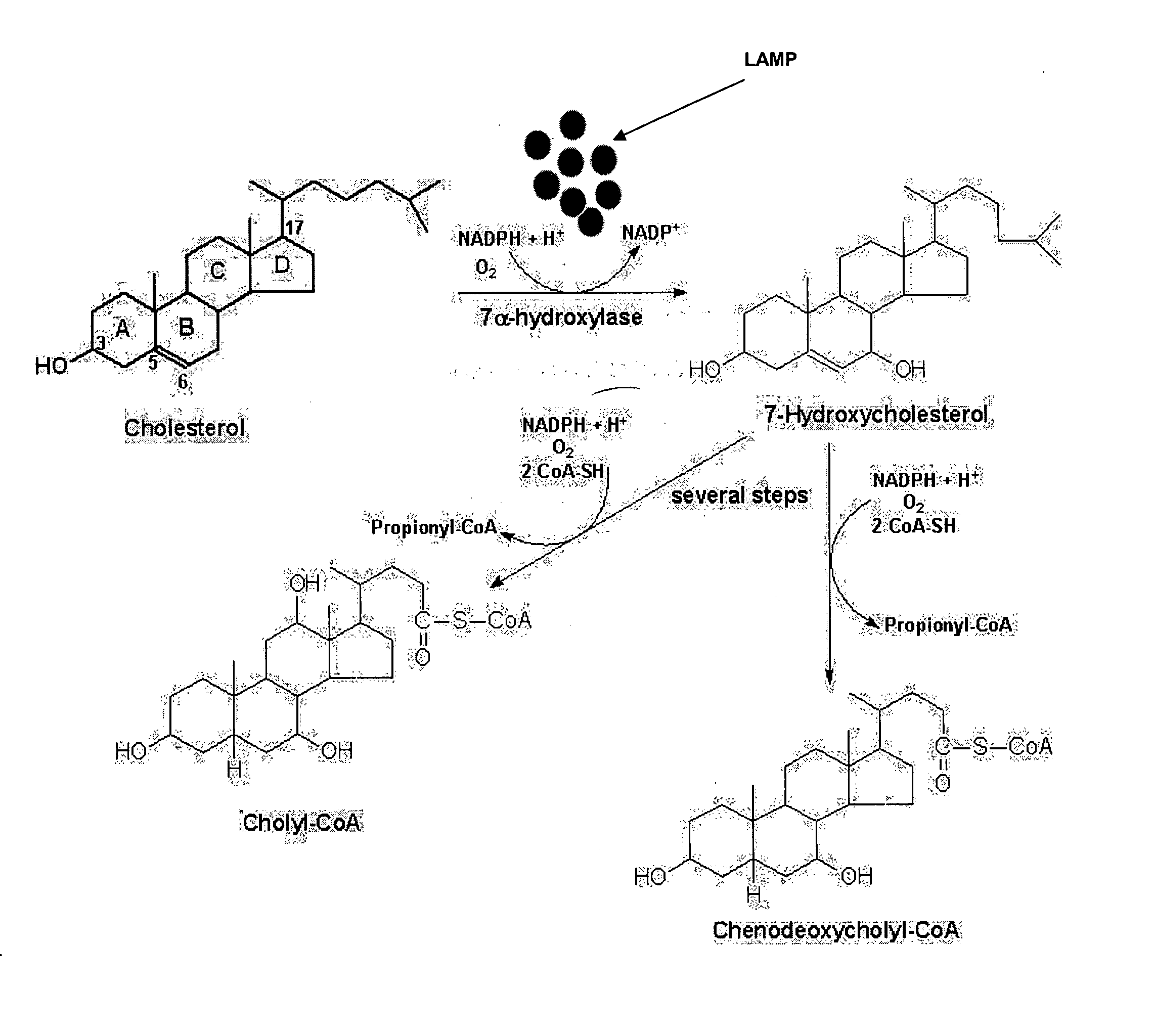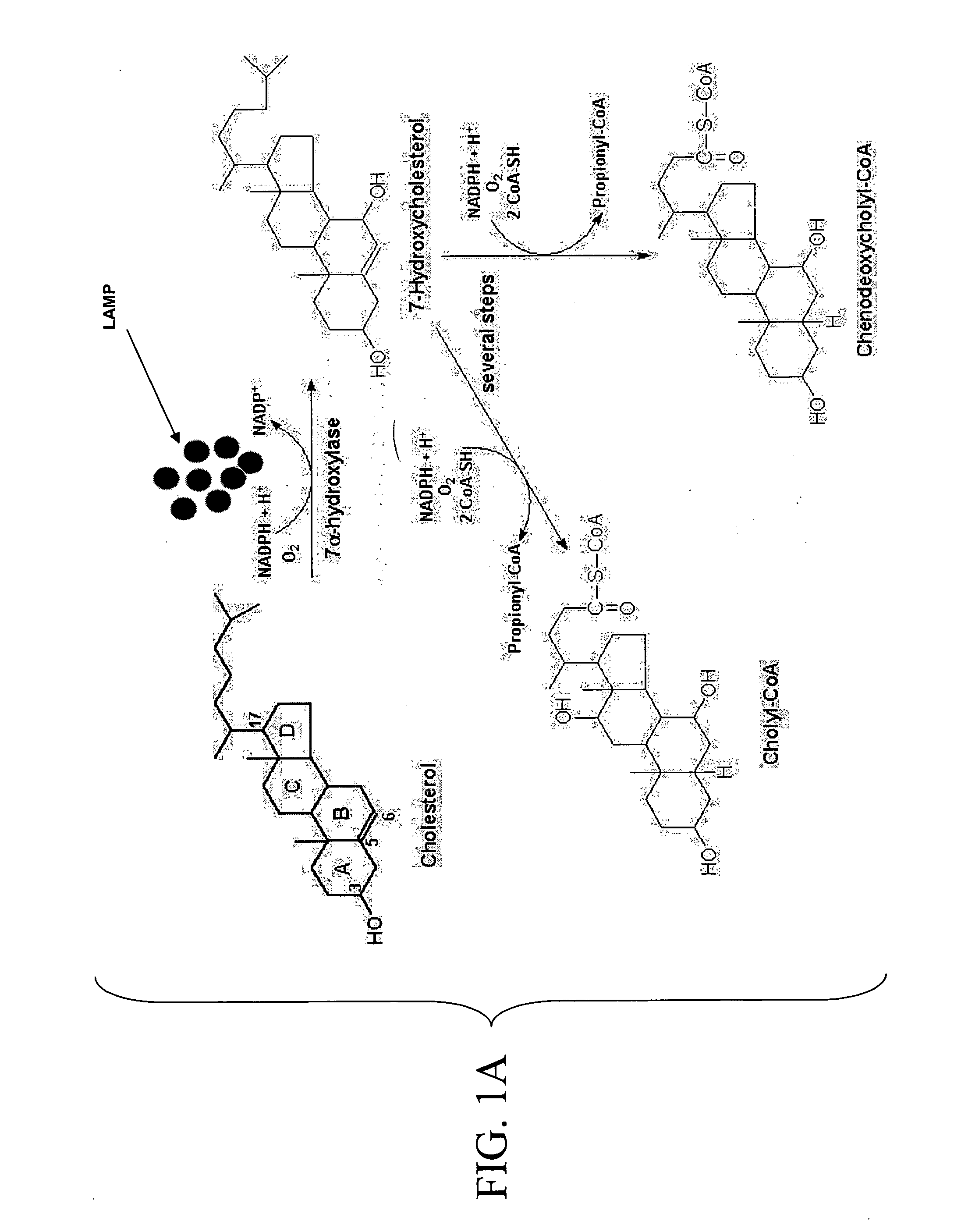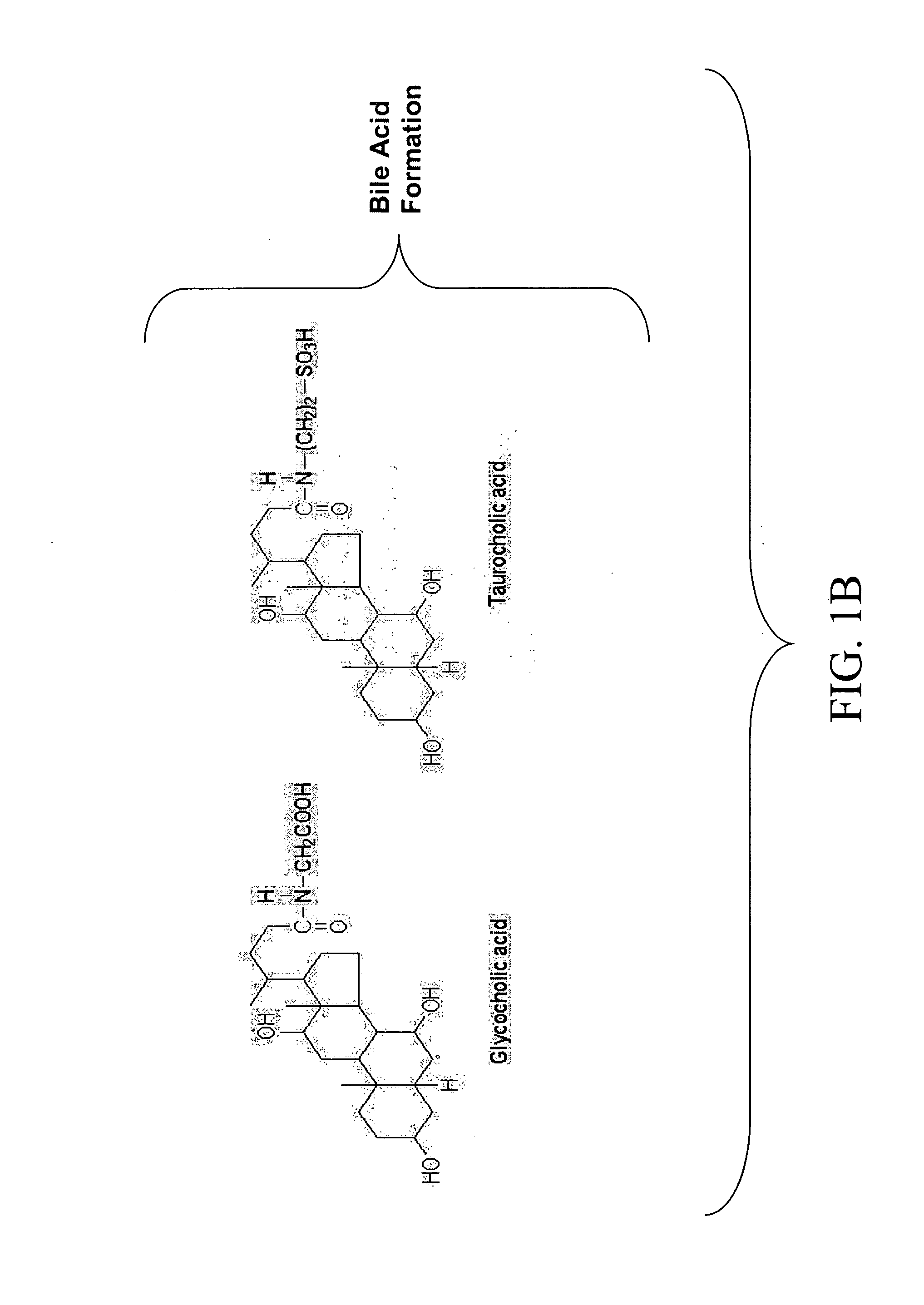Materials and methods to reduce low density lipoprotein cholesterol
a low density lipoprotein and cholesterol-reducing technology, applied in the field of materials and methods to reduce low density lipoprotein cholesterol, can solve the problems of unusually sensitive people to the effects of cholesterol-reducing drugs, high cholesterol risk, and high cholesterol, and achieve safe and effective reverse transport, reducing both circulating ldl and plasma cholesterol levels.
- Summary
- Abstract
- Description
- Claims
- Application Information
AI Technical Summary
Benefits of technology
Problems solved by technology
Method used
Image
Examples
example 1
Preparation of Magnetic Fe2O3 Nanoparticles
A. Materials and Methods
Material: Iron (II) chloride, Iron (III) chloride 97%, deionized water with (resistance 17.8 MΩ) and necessary glass apparatus.
[0076] Method: In preparing homogeneous nanoparticles it is preferable to perform the reaction under basic aqueous conditions without surfactants using a molar ratio of Fe (II):Fe (III)=1:2. Deionized water (resistance 17.8 MΩ) was used to suspend the components with vigorous stirring. The resulting aqueous suspension was precipitated by the spray method and the resulting magnetic particles washed with deionized water to remove unreacted components (Shang, H et al. Langmuir, 2006 Mar. 14, 22(6):2516-2522; Gomez-Lopera, S A et al. Langmuir, 2006 Mar. 14, 22(6):2816-2821; Fuentes, M et al. Biosens Bioelectron, 2005, 20(7):1380-1387).
B. Results
The preparation of magnetic nanoparticles is performed in aqueous medium and obtain particles of specific size (60-160 with narrow distribution)....
example 2
Attachment of LDL Antibodies and 7-alpha Hydroxylase to Magnetic Nanoparticles
A. Materials and Methods
Material: Fe2O3 nanoparticles (60-160 nm with narrow distribution), LDL antibodies, β7 hydroxylase and NADH
[0077] Method: A solution of LDL antibodies in deionized water was mixed with 0.5 mL of carbodiimide solution and added to a colloidal suspension of magnetic nanoparticles. The solution was left to stand for 15 minutes to allow hydrolysis of the surface groups and formation of vitreophilic nanoparticles. The functionalized suspension was stirred vigorously and allowed to stand for at least 24 hours to produce LDLAb-Fe2O3 (LAMP) nanoparticles. The same procedure was followed for adsorbing 7-alpha hydroxylase to the LAMPs (Lee, H Y et al. J Nanosci Nanotechnol, 2002, 2(6):613-615; Chu, Y et al. J Phys Chem B Condens Matter Mater Surf Interfaces Biophys., 2006 Feb. 23, 110(7):3135-3139). The LAMPs were then washed with deionized water to remove any excess components and added...
example 3
Reduction of Cholesterol in Serum with Modified Nanoparticles
A. Materials and Methods
Material: Human serum, modified iron oxide nanoparticles with LDL antibodies and enzymes and biomolecules as discussed in Examples 1 and 2.
[0078] Methods: LAMPS were used to bind LDL cholesterol in blood serum. Before the experiment, the concentration of LDL and HDL in the blood serum was determined by UV absorbance. About 500 μL of LAMP suspension in deionized water was mixed with 5 mL of serum at room temperature and stirred for 5 minutes. The change in concentration of LDL and LDH was then measured every 5 seconds. Preliminary results showed that LAMPs significantly reduce the LDL concentration without affecting HDL.
Results: LAMPs are mixed with a blood serum sample, stirred, and the relative levels of LDL and HDL determined spectrophotometrically. The LAMPs are able to specifically remove LDL from serum.
PUM
| Property | Measurement | Unit |
|---|---|---|
| resistance | aaaaa | aaaaa |
| Ka | aaaaa | aaaaa |
| density lipoprotein | aaaaa | aaaaa |
Abstract
Description
Claims
Application Information
 Login to View More
Login to View More - R&D
- Intellectual Property
- Life Sciences
- Materials
- Tech Scout
- Unparalleled Data Quality
- Higher Quality Content
- 60% Fewer Hallucinations
Browse by: Latest US Patents, China's latest patents, Technical Efficacy Thesaurus, Application Domain, Technology Topic, Popular Technical Reports.
© 2025 PatSnap. All rights reserved.Legal|Privacy policy|Modern Slavery Act Transparency Statement|Sitemap|About US| Contact US: help@patsnap.com



